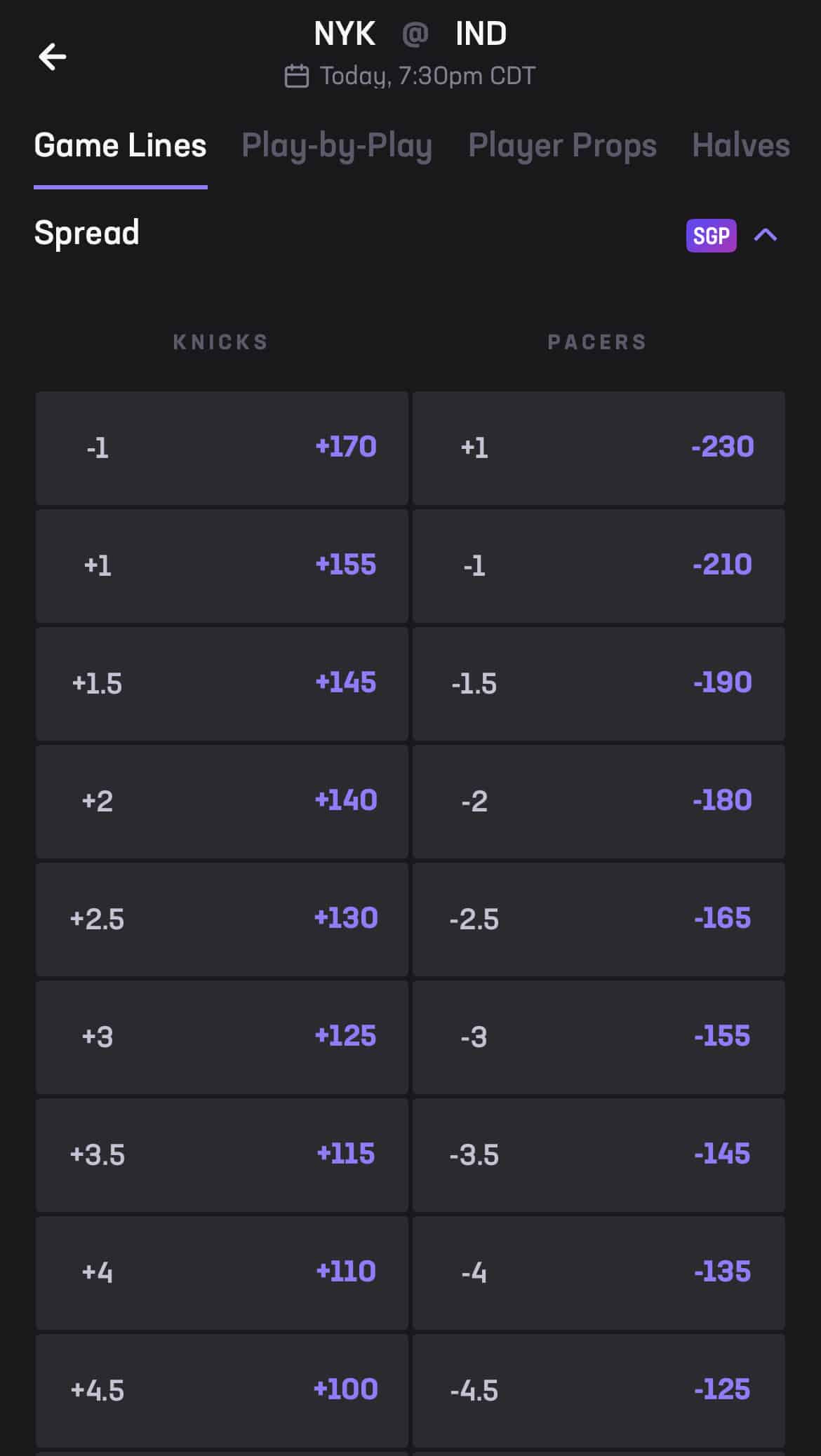
Updated: June 20, 2025
Spread betting is one of the most common ways to bet on sports, and with more and more people across the country gaining access to legal sportsbooks like Hard Rock Bet, it’s important to know the ins and outs of the topic. So what is spread betting? How do you bet on the spread? What makes betting the spread so popular? Let’s take a deep dive into the topic and answer all of these questions – and more.
In essence, spread betting is a wager on a game, event, or contest that is handicapped, awarding points to the underdog to level the playing field.
Take an NFL football game, for example. Instead of just picking the winner (also known as a moneyline bet), you’re betting on how much a team will win or lose by. That’s the “spread” – the term used for the expected gap in scores.
If Hard Rock Bet sets a spread of -3.5 for the favored team, it means they need to win by 4 or more points for you to win your bet. By contrast, if you bet on the underdog at +3.5, they can either win the game outright or lose by less than 4 points for you to win.
The idea is to even the odds, making it enticing for people to bet on both sides with appealing prices on both ends.
Notably, when placing any type of wager the official Hard Rock Bet House Rules will apply at all times.
The odds for a spread bet will refer to the actual point spread, and will be expressed as a positive or a negative number indicating the number of points in the spread. If the spread is negative (example: -1) it means that this team is judged to he the favorite, and is more likely to win. In contrast if the odds for a spread bet are positive (example: +1) it means that the team is the underdog, and has been deemed less likely to win.

When betting on a team that is favored, they must win by (cover) the number of points in the spread. Using the -1 example above, this team must win by more than 1 point to count as a win. If they win by exactly one point it is scored as a push.
It’s not uncommon to see the odds for a spread with a half point. For example, -7.5. This guarantees that there won’t be a push since it’s not possible to score a half point. If the favored team wins by 8 or more points, -7.5 cashes… if they win by 7 or fewer points, it does not. Instead, the bettors on the underdog at +7.5 will win their wagers.
In addition to the odds, when betting on the point spread it’s also important to look at the pricing. Generally speaking the prices on both sides of the spread will be similar, set to encourage action on both sides. You can find the price for a spread bet listed just to the right of the odds, within the spread box.

When reading the prices, a negative number means the amount you would need to bet in order to win $100. As an example, -110 is a very common price when betting a spread. This means that a successful $110 bet would yield $100 in profit. A positive number will represent the amount you stand to win from placing a $100 bet.
When placing a bet on the spread there are three possible outcomes. It may seem simple, but let’s break them down:
To this point we’ve focused entirely on the standard spread that is set for each game, however, it is possible to pick an alternate spread. While the pricing will change to compensate, it’s possible to pick from a variety of different outcomes. Think a team is going to win by more than the spread? You can bet that with an alternate spread. Think the underdog actually wins the game by a few points? You can bet that, too, and receive a more favorable payout than if you just took them to cover or to win on the moneyline. Alternate spreads are a great way to maximize the value of your convictions.

How exactly do you place a spread bet? Let’s walk through the process on Hard Rock Bet.

While Hard Rock Bet uses the term spread, spread betting does have a few aliases around the world. You may at times hear the following terminology:
Each of the above is referring to essentially the same thing. These monikers have deep roots in both sports and financial realms. These alternate terms emerged due to the diverse applications and historical evolution of the spread bet.
In sports betting, the spread acts as a mechanism to even the odds between opposing teams or players. The concept dates back to early forms of wagering, where bookmakers sought to balance bets by giving one side a perceived advantage (or disadvantage) represented by the spread.
Still have questions about spread betting? We’ve got answers.
On This Page
A spread bet is a type of wager that is handicapped, meaning it’s not just who wins a specific game – but by how much that matters the most. If you choose to bet the spread on an NFL team that is favored, for example at -2.5, they would need to win the game by at least 3 points to cash your ticket. By contrast, if you bet on the underdog at +2.5, they just have to lose by less than 3 points for you to win the bet.
Sportsbooks will take into account a variety of factors when determining the spread. Team news, past performances, where the game is located, what the weather looks like if the game is outside, and of course – market activity.
It depends on the circumstance! A positive spread, like +4, indicates that the team is being spotted four points and is the underdog in the contest. If you bet on a team with a positive spread it means that they can still lose, but as long as they stay within the set number of points – you can win.
A negative spread means that a team is favored, and must win by the set number of points. If they don’t win and cover the spread, your bet is a loss.
Pricing is a big factor here. Spread betting allows you to wager on a specific team without having to pay an exorbitant price to do it. Let’s say you want to place a bet on a #1 seed vs. a #16 seed in the first round of the NCAA tournament. The #1 seed is heavily favored to win here with a large perceived discrepancy between the teams. As a result, the moneyline odds will reflect this. For example, as a -5000 favorite a $100 bet would stand to return just $2 in profit ($102 total). However, if you bet on the #1 seed to cover the -22.5 point spread with a price of -110, the same $100 bet would return $190.91 ($90.91 in profit) if successful.
Absolutely you can. Spreads are one of the most common ways to bet on sports and are certainly an option for both standard parlay wagers, and Same Game Parlays.
With a spread bet you need to worry about the margin of victory, however, with a moneyline bet the only concern will be who wins.
It means the team must win by more than 7 points to cover and win the bet. This is a common spread for both NFL and college football games as 7 points represents a touchdown plus an extra point.